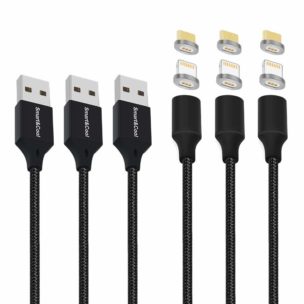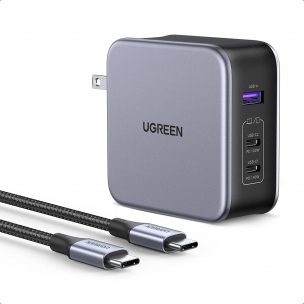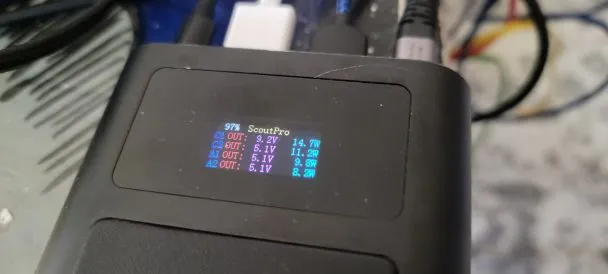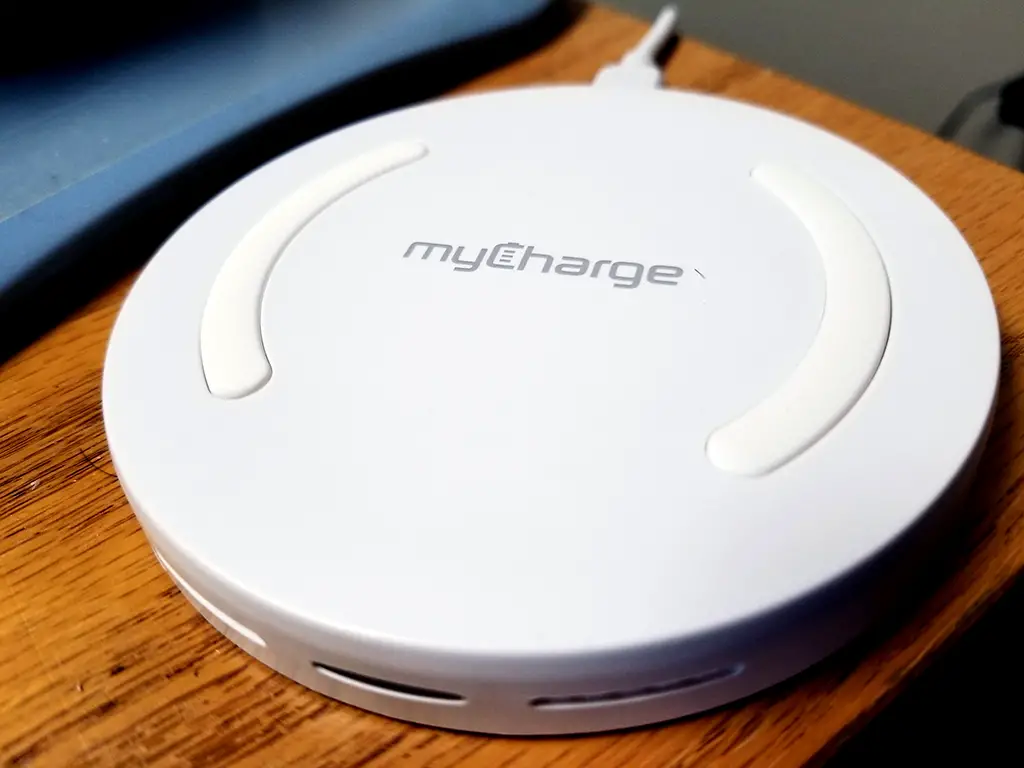Why you (probably) don’t need expensive charging tech
In the latest installment of “let’s shoot our profit potential in the foot,” I present a quick: What you do and don’t actually need in phone charging technology. TL;DR – figure out what your use case is before lusting after expensive charge tech.
Preface: What is modern charging
Modern charging in 2022 is accomplished by either a cable or a wireless Qi connection that pushes little electrons into a charging gate which get stuffed into a battery. The charging flow is limited by carrier (cable or wireless/Qi,) battery conditions, a charging kernel, and power source.
Android phones I’ve dealt with charge slower when the cables are bad, screen is on, temperatures are hot, or you actually need them to charge fast. This puts a phone running navigation in your car on the dashboard as about the worst possible charging scenario there is.
Cables
I’ve been charging phones using Android standard since 2009 if I’m not mistaken. Do yourself a favor and buy a few decent cables. These cables may cost more than what you can find at a dollar store/discount place/gas station, but they also 1) last a hell of a lot longer, 2) conduct the amount of charge they’re supposed to.

Cheap-o cables, and I’m talking CHEEEEEAP, do not. They might top out at 1 amp when your phone can pull in 5. They tend to break internally up near the head of the cable and stop charging, or stop charging at decent speeds. I have thrown away a ton of cables lately that just aged out of life (they did work, they stopped working I guess due to internal failure of the cheapo metal.) One of the discarded cables had not been used, just had died internally sitting in a drawer. It happens.
My personal favorite USB-C to USB-C charging cable has been these, which are about $6 a cable at current pricing. You can find better pricing, and probably better cables. These are just the ones I chose and have verified I get 100 Watt charging without issues. They also have necks that feel pretty sturdy. 100 watt charging is overkill for a phone as a note.
A cable will be your best cheap investment. A bad cable will make you think your phone and your charger are shot.
One thing to note – you need to decide if you need a charging cable or a high speed cable. Things like the one I linked above will hit top speeds of 480mbit / USB-2 speeds. I just needed a charging cable I could trust. I did not need a high speed data transfer cable. Those will run you extra.
Fast charging
I can fill my phone up from dead to nearly fully charged in 45 minutes. Do I need to? In my case my normal charging needs that is a big no. My phone lasts most of the day with no issues, and although I have a super fast charger at home generally I just slap my phone on my night stand and let it wirelessly charge over night.

I’m not going to get into a device specific and scenario specific sales pitch about the benefits or degradations of fast charging, qi charging, and battery management kernel theory for the past fifteen years, but my general belief is if you don’t have to go as fast as possible all the time that is probably a good thing.
In other words, have a fast charger handy, use it when you need it, slow charge when you don’t like at night. This is a suggestion based on opinion based on observation of older phones and how they’ve worked in the past.
Also should be noted that you need to match your power charging standard as we’ve got something like seven “fast” charging standards still out there. Ultra fast Qualcomm quick charge power delivery 2-3.x etc… I think PD 3 is the current winner but whatever.
Fast wireless charging
Fast wireless charging / fast Qi / whatever the buzz word is this week is a much higher speed wireless charging standard which will cut your charge times on wireless significantly. Do you need it? Not if you’re charging overnight.

That’s my general wireless charging scenario. Overnight. I mean, there’s also my kids devices but I force them to use wireless because they’re terrible with cables and jamming them in. I also want to force them to slow their roll.
In general, evaluate your wireless charging strategy. If you *need* fast wireless, you’re not the target demographic I’m thinking about as I see no reason to invest excessively in a slower-than-wire charging technology. That’s just me however.
Car charging
This one’s interesting – I’m running into finding a bunch of these high speed charging 50+ watt chargers can deliver about 16 watts, really low amps, and are generally garbage. I’ve returned two car chargers now that I could not review because no matter what car or jumper battery I put them on, and which device S9, S21, S7, S6, and a ScoutPro charger, I could not get speeds above about 16 watts.

I initially thought maybe it was me. Maybe my Honda Odyssey had some sort of limit in the power adapter. Maybe my wife’s Subaru Outback couldn’t handle it. Maybe my jumper battery/power station was limited to 30 watts total. Maybe Samsung devices and that Scout Pro and a little Ma-meter I have were all conspiring against these devices. Maybe I had bad cables.
But it doesn’t appear that was the case. Just a lot of cheap chargers out there. Some from reputable brands re-branding and not testing.
Now, your phone doesn’t charge fast when the screen is on, this is something you should know – getting an 80 Watt car charger, opening Google maps for a trip, you’re probably going to charge at +800mA if that. I regularly see sub 500mAh charging in a car and quite often negative charge rates because screen on charging is slow, phone in the sun charging is slower.
So, invest in a decent car power charger, but remember it’s not going to help a lot while your phone is in active use and in the sun. Test whatever good charger you do purchase for a couple of minutes using a battery monitor, screen off, and the phone not sitting in the sun.
I have no recommendations on what car charger to purchase as, well, I’ve got two meh ones and multiples I’ve returned.
Super fast power bank!
If you’re at the point you’ve pulled a power bank out and attached it to your phone, ask yourself this question – does an additional $40 to make this brick attached to your phone go away 10 minutes faster make sense? Does an extra $70 for a built in power meter have any value to anyone other than a reviewer?

This isn’t me saying don’t get a faster charging power bank, this is asking to evaluate where the value is for you. In my mind you’ve already failed at keeping your phone charged because you’re having to lug this thing around. An additional 10 minutes of charging is probably not going to change that I’m carrying a 3 pound brick.
That’s a whole lot of Watts!
100 watt $79usd charger on a phone? You’re going to pull maybe 20-40. Let’s go for the 140 Watt charger that’s about $102usd and we’ll pull a whopping… 20-40. Now let’s heavily invest in a 200 Watt $150usd charger and we’re looking at … 20-40 Watts. Your phone isn’t going to pull anything more than it’s designed to.
Also just.. not a warning but something to note – not saying there’s deception here, but a 200 Watt GaN charger can be a 100 Watt max port charger with a total available all-ports of 200 Watts… just make sure you’re getting the wattage you want…
Will you use that feature?
Wireless charging from a power bank – cool, but will you ever use it, ever? I thought I would, but nope.
Solar panel charging of a portable power bank and nope.
Inverter in a power bank to power small appliances and nope. Sounds good in theory but when you discover the wattage can barely maintain an old school lightbulb you’ll realize it’s useless.
Solar panel anything – here’s where this comes in – you’re going to spend $30-200 for a solar panel to charge a device. This will be absolutely great in the event of an emergency that knocks out power to your neighborhood for days on end. However, you’re not going to ever make that money back in terms of electricity generated. Just be aware of this. Also be aware that generally when power is knocked out you’re dealing with storms and cloudy conditions.
And finally…
I’ve encouraged you to just think about what you’re actually getting. If you don’t understand your charging needs you’re purchasing either overkill or underkill and will be disappointed. Take some time to figure out what you actually need on a day to day basis.


